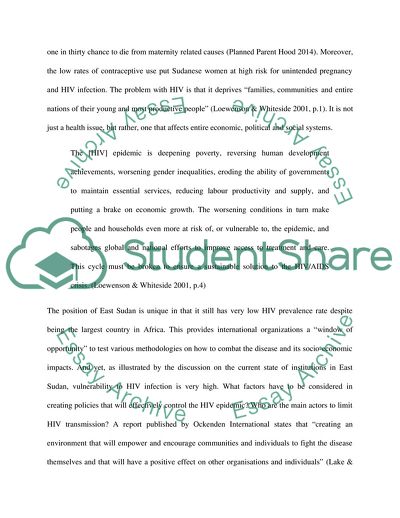Cite this document
(The Impact of HIV on the Empowerment of Household Women in East Sudan Research Proposal Example | Topics and Well Written Essays - 2750 words, n.d.)
The Impact of HIV on the Empowerment of Household Women in East Sudan Research Proposal Example | Topics and Well Written Essays - 2750 words. https://studentshare.org/gender-sexual-studies/1825222-the-impact-of-hiv-on-the-empowerment-of-household-women-east-sudan
The Impact of HIV on the Empowerment of Household Women in East Sudan Research Proposal Example | Topics and Well Written Essays - 2750 words. https://studentshare.org/gender-sexual-studies/1825222-the-impact-of-hiv-on-the-empowerment-of-household-women-east-sudan
(The Impact of HIV on the Empowerment of Household Women in East Sudan Research Proposal Example | Topics and Well Written Essays - 2750 Words)
The Impact of HIV on the Empowerment of Household Women in East Sudan Research Proposal Example | Topics and Well Written Essays - 2750 Words. https://studentshare.org/gender-sexual-studies/1825222-the-impact-of-hiv-on-the-empowerment-of-household-women-east-sudan.
The Impact of HIV on the Empowerment of Household Women in East Sudan Research Proposal Example | Topics and Well Written Essays - 2750 Words. https://studentshare.org/gender-sexual-studies/1825222-the-impact-of-hiv-on-the-empowerment-of-household-women-east-sudan.
“The Impact of HIV on the Empowerment of Household Women in East Sudan Research Proposal Example | Topics and Well Written Essays - 2750 Words”. https://studentshare.org/gender-sexual-studies/1825222-the-impact-of-hiv-on-the-empowerment-of-household-women-east-sudan.


